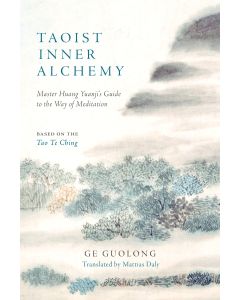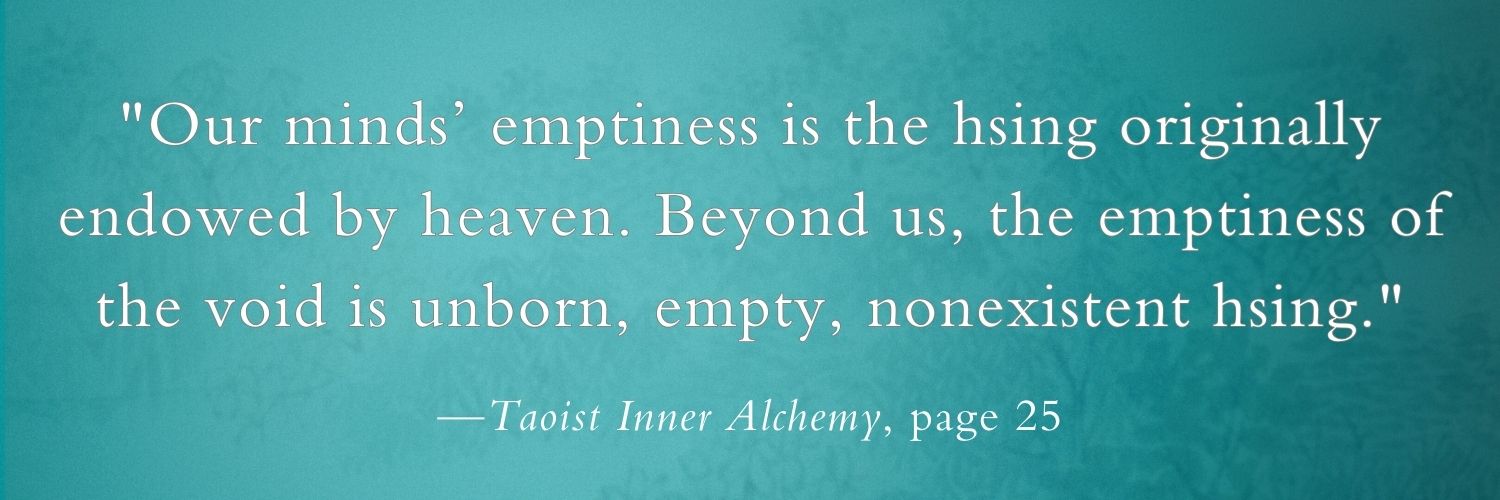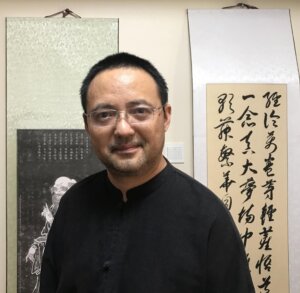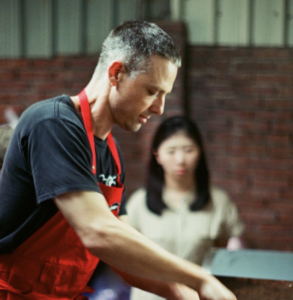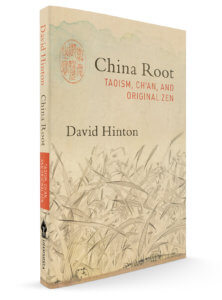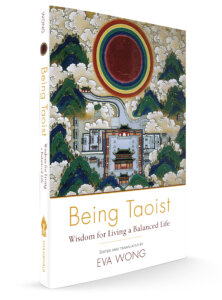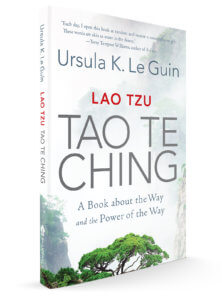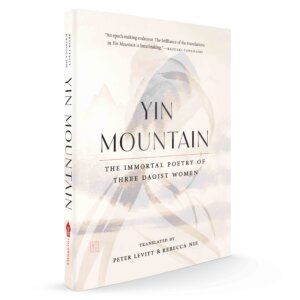Illuminating the Mind to See One's Nature:
The Root of Taoist Inner Practice
An Excerpt from Taoist Inner Alchemy
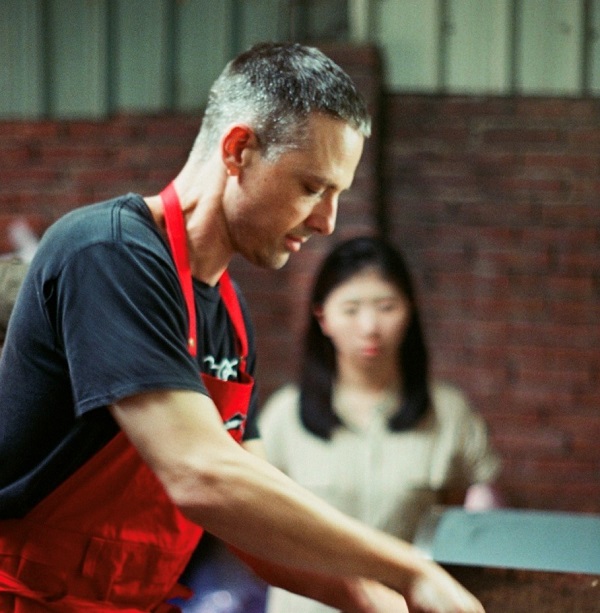

Mattias Daly
MATTIAS DALY is a professional translator with a degree in acupuncture and a master’s in Chinese Literature. He was inducted into the Longmen lineage of Complete Reality Daoism by Abbess Liu of the Three Purities Monastery in Jilin province, China in 2013. He primarily translates for the National Palace Museum in Taipei and the Chinese Taipei PEN quarterly.
Mattias Daly
GUIDES
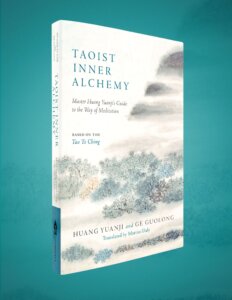
Illuminating the Mind to See One's Nature: The Root of Taoist Inner Practice
By Master Huang Yuanji & Ge Guolong
Translate by Mattias Daly
About This Excerpt
Taoism and Buddhism, specifically Chan Buddhism, share many similar ideas including the concept and practice of inner cultivation, the nature of emptiness and non-duality, down to seemingly obscure koan-esque puzzles like encouraging practitioners to seek the Tao, followed by phrases like "the Tao cannot be found."
In the following excerpt from Taoist Inner Alchemy, Ge Guolong comments on Huang Yuanji's discourse on illuminating the mind to see its fundamental nature, pointing out the significance of such inner cultivation as the root of Taoist practice. In this regard, Taoism and Chan Buddhism share a similar goal in the practice of turning inwardly toward the nature of one's mind. However, as Ge Guolong explains, "the angles from which it approaches this work, and the ways in which it expresses its goals can be quite different from Buddhism’s." In short, using Master Huang Yuanji's discourse, Ge Guolong demonstrates that Taoist practice enables Taoist Inner Alchemists to attune to the patterns of the Tao, arriving home at one's primeval state.
For those interested in Buddhist discourse related to Chan, Zen, and Dzogchen, Master Huang Yuanji's discourse alongside Ge Guolong's accessible commentary is an elegant deep dive into the language and worldview of Taoism.
Illuminating Your Mind to See Your Nature
Chapter 2, page 39-43
I did not choose the ten discourses from Huang Yuanji’s The Oral Record of the Hall of Joyous Teaching that appear in this book at random—they are interrelated and work in concert with one another. Huang’s lectures approach alchemy from different angles and, taken as a whole, present a system of practice. Exploring these ten discourses allows us to distill a basic summary of the process of refining the internal elixir as well as to encounter all of the major principles of Taoist cultivation.
“Illuminating Your Mind to See Your Nature” appears as the second discourse because the work the chapter title describes is Taoist alchemy’s most central component. In fact, speaking more broadly, it represents the centerpiece of all the different types of training in the entire corpus of Taoist cultivation. I am of the opinion that although there are different schools, lineages, and paths of true Taoist practice, they all revolve around this nucleus. Thus, if one were to ignore this core teaching, then one could not be on the correct path. This is why practicing without illuminating the mind is described in terms such as walking along corrupted routes, following crooked roads, entering side doors, or treading left-hand paths. If a teacher is speaking of the true, correct path—the Great Tao—then his or her teachings will most definitely contain this central point that is common to all branches of Taoism. The fact that all different schools and lineages eventually speak of illuminating mind and seeing original nature is not simply a matter of who influenced whom. Rather, it is a matter of the truth of life and the universe—of what reality fundamentally is. The reality of each of our true lives is the same, and thus, this teaching is pervasive.
Consider how Chinese Buddhism was inherited from India, a place that has had its own cultivation traditions since ancient times. After Shakyamuni founded the Buddhist tradition, it was transplanted to China. Taoism is China’s own native religion, and, like Buddhism, it too is a tradition that comes from antiquity. One cannot say that Taoism came into being because of Buddhism’s influence, just as one cannot say that Buddhism was born of the influence of Taoist philosophy or religion. They both descend from different origins. Nevertheless, from the Song and Ming dynasties onward, despite the fact that the three schools of Confucianism, Buddhism, and Taoism had all developed independently of each other, many great masters began to emphasize that “the three teachings are one.” This included Huang Yuanji, who espoused the oneness of the three teachings when he taught the Tao. Sometimes he drew upon certain ideas from Confucians or cited the Confucian Four Books in order to flesh out his own ideas, and he of course quoted Buddhist ideas, most notably those of Chan Buddhism.
This melding of the three schools into one reflects the blending and exchange that took place at the level of cultural interaction, but it also reflects deeper intrinsic compatibility. This blending occurred a bit like the way people with distinct cultural backgrounds or world-views can suddenly meet and get along so well that they feel like kindred spirits. Mutual understanding can arise like this because, at the end of the day, the predicaments all humans face are quite similar. Similarly, because many of the key issues cultivators from different traditions are concerned with are the same, they are often able to find common ground without having had any prior encounters. Due to the intrinsic compatibility of traditions devoted to understanding reality, when different traditions’ representatives start to mingle there will always be mutual influence. It is as though they quickly discover, “I can use your vocabulary to explain my way, and you can use my vocabulary to explain yours. The true, eternal Way that transcends language itself seems to be the same thing for both of us.”
Lao-tzu’s first declaration in the Tao Te Ching was, “Any way that is called ‘the Tao’ is not the eternal Tao.” With language we can do no more than attempt to attach footnotes to Great Way, which remains beyond words no matter what we say about it. No explanation or expression will ever suffice to represent the Tao, as its ultimate truth lies beyond conception and is therefore ineffable. This is the reason why various traditions’ modes of verbally pointing in the direction of the Tao can come across as very different, while those things at their core that transcend language are completely identical.
I have a personal interest in many different philosophical schools and religions. I do not just research Taoism, but Buddhism, as well. I am also interested in some of the masters of New Age religions. After studying and experiencing their teachings, I have usually been able to find areas of intrinsic compatibility. These areas of overlap are found in the realm of methods for cultivating the mind in order to trigger an awakening to its fundamental nature—precisely the issue this chapter is devoted to.
“Illuminating the mind to see one’s nature” was originally a term from Chan Buddhism, which describes the ultimate purpose of Chan practice. Chan is described in Buddhism as being “a separate transmission beyond the sutras, not established in words, which directly points out the human mind, so that one can see one’s mind’s nature and become a buddha.” In short, Chan is not something that can be found inside of words. Being beyond language, the function of its teachings is to directly point toward the mind in order to create the conditions for one to see the Tao and directly experience one’s own buddha nature. This process is encapsulated in a pithy saying: “Seeing your mind’s nature, you become a buddha.”
Taoist alchemists also speak of illuminating the mind to see original nature, which can be written as hsing. Taoists’ understanding of this process is interconnected with Chan teachings and does not contradict them. However, Taoism’s points of emphasis, the angles from which it approaches this work, and the ways in which it expresses its goals can be quite different from Buddhism’s.
It is well known that Taoist alchemists speak of simultaneously cultivating hsing (original nature) and ming (life essence). People who have not looked deeply into these teachings sometimes reflexively react to them by saying, “but isn’t illuminating the mind to see one’s nature a Buddhist thing? It doesn’t have anything to do with Taoist alchemists.” Such statements are skewed. Taoists most definitely do emphasize illuminating the mind in order to see original nature, and doing so definitely does not contradict the cultivation of ming. The two are not opposed. In the broad framework of simultaneous hsing and ming cultivation, illuminating the mind to see one’s nature occupies the nucleus of hsing practice.
When inner alchemists talk about illuminating the mind to see original nature, they root their discussions within the framework of simultaneously cultivating hsing and ming. Hsing and ming are so fundamentally connected and integrated that, at the highest and most comprehensive level, there is no distinction between the two. They are unified. Because the Tao itself transcends all distinctions between hsing and ming, authentic hsing cultivation includes ming, and authentic ming cultivation cannot be separated from hsing. Thus it is that illuminating the mind to see its nature is not merely the nucleus of hsing cultivation—it lies at the center of both hsing and ming cultivation. This is why Huang Yuanji takes such pains to stress that illuminating the mind to see one’s nature is the root of all practice.
What exactly is meant by illuminating one’s mind to see one’s nature? We can try using various terms or theories to explain it, but regardless of what is said, if all one sees are words, then words are all one will ever get. Illuminating the mind is done by shedding light upon the interior of one’s heart, not by illuminating a manuscript. One must pierce through the words in these teachings in order to reverse one’s perspective and observe one’s own mind. This is what leads to locating one’s own hsing and realizing one’s own fundamental nature. The real experience of illuminating the mind and recognizing original nature is too subtle and profound to be approximated linguistically.
Despite the limitations of language, we can still compare the words left behind by accomplished Taoist cultivators with our own experiences of the mind’s original nature. As you read through Huang Yuanji’s discourses, you should connect with your own inner nature as best you can, so as to develop a feeling for his meaning. Do not focus solely on the words and the subject matter in these chapters. Instead, allow your mind to resonate with what is written here. This is the way to get this book to actually help you illuminate your mind to see your nature, instead of just giving you an intellectual understanding of the theories and lore related to Taoist practice.
A discussion of the concept of “illuminating the mind” might start with a very basic question: What is mind? But actually, it may be best if I do not make a stringent effort to explain or define mind, because everybody already knows what it is. After all, our minds never stop working all day long. A very simplistic explanation for what the mind is is thought. The word “mind” can be conceived as representing the totality of our mental activity, while the word “thought” refers to individual instances of mental activity.
That we are humans is because we have minds, and not simply because we have bodies. There is a short story in Chuang-tzu in which a sow suddenly dies. At first her piglets do not realize that their mother has passed away, and they continue happily suckling at her teats for milk. But the instant they realize she is dead they run away from her body in fear. Is it that these piglets do not love their mother? Of course they love her, but now they realize that the sow’s corpse is no longer their mother. With the core—the sow’s mind—no longer present, her body is no more than a carcass. To the piglets it is incapable of representing “mother.” Nobody feels love for a cadaver, even that which belonged to a loved one. At essence, what we love are one another’s hearts, not one another’s bodies.
Buddhism teaches that all people have buddha nature, which means that all humans have an independent, sentient mind. However, the minds of most people are unawakened. In Buddhist terms, to have an “unawakened” mind means to remain bound to the habits of reification and objectification. Our minds are home to an endless stream of discrete objects of attachment that we think and worry about. At a certain level, our minds are filled with thoughts of external things: our businesses, careers, rent and mortgages, car payments, work responsibilities, and so on. At a somewhat deeper level, our minds get caught up in our bodily sensations, and they get focused on the act of thinking itself. All of us are aware of a huge spectrum of phenomena, but there always remains one crucial thing our minds are unaware of: the mind itself. To have a mind that cannot truly see itself is to be without self-knowledge.
This is a point that is worth soberly reflecting upon for a moment. We all know countless facts, and we are all capable of thinking about a huge variety of complicated matters, but do we actually know our own selves? If we have actually tasted self-knowledge, is it something that is present for us at all times and all places? If your honest answer is, “I always know myself, no matter where I am and what’s happening,” then congratulations! You are already at least halfway to being a spiritual immortal, and you certainly do not need to hear any more teachings about this.
For the rest of us, it is necessary to practice, in order to discover firsthand that the fundamental essence of our minds is the same as the Tao. Hsing, or original nature, is fundamentally sentient, brilliant, vast, and immeasurable. Our basic nature is as expansive as the empty sky and just as free of attachment and obstruction. However, despite being of this essential nature, our unawakened minds can be seized by one object or phenomenon after another, eventually becoming trapped by thought.
If we reflect upon our lives, it is possible to discover that we were each formed by the multitude of emotions, ideas, and thoughts in our minds, and yet this all took place without us ever having been conscious of the basic essence of the mind itself. The mind’s “basic essence,” which is another way of saying hsing, refers to what the mind was before it became tethered to conditions or yoked to this or that object or phenomenon. To find the way back to this uncontrived, primeval state is—to use the terminology of Chan Buddhism—to find one’s “original face.” This is to lay eyes upon hsing, our original state of being.
Ge Guolong has a PhD in philosophy from Peking University. Since 1999, he has worked as a researcher at the China Academy of Social Sciences Taoism Research Center. Professor Ge has published numerous books on Taoist inner alchemy in Chinese and has also conducted extensive research into Chan Buddhism He is a long-time practitioner of Taoist and Buddhist meditation.
Mattias Daly is a professional translator with a degree in acupuncture and a master’s in Chinese Literature. He was inducted into the Longmen lineage of Complete Reality Daoism by Abbess Liu of the Three Purities Monastery in Jilin province, China in 2013. He primarily translates for the National Palace Museum in Taipei and the Chinese Taipei PEN quarterly.
Related Books on Taoism

